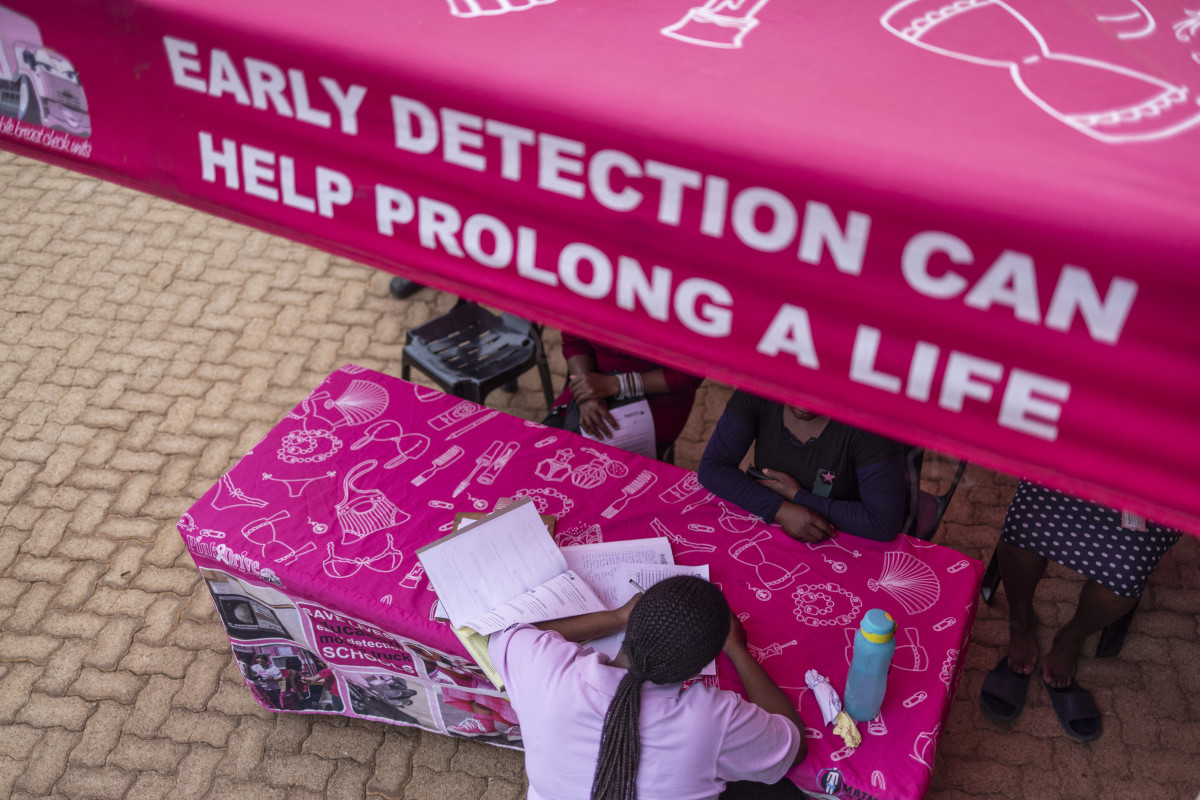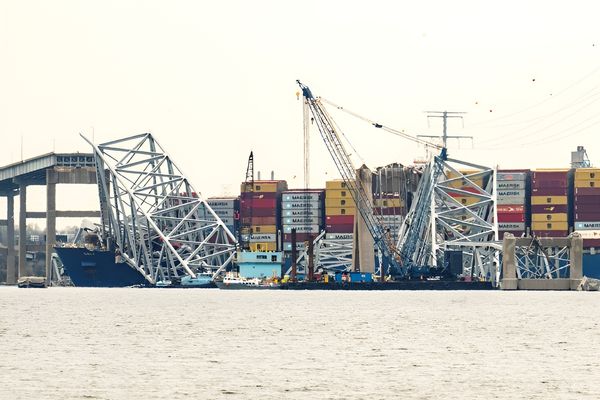
Fast Facts
- Base Molecular Resonance Technologies has received a patent for a device that can detect every element on the periodic table.
- The device can additionally detect 200 types of cancer.
- TheStreet sat down with the company's leadership to discuss its journey and its device.
When former Air Force colonel Derek Duke returned from Vietnam, he undertook a personal mission to find the "Tybee bomb," a bomb dropped and lost in 1958 during a training exercise gone wrong off the coast of Georgia.
His public efforts to locate the bomb led to a meeting with a man who had invented a technology that, using frequencies, could detect elements on the periodic table. That meeting led to a friendship, which in turn, led to a business partnership. Before the inventor died, he asked Duke to finish the work.
The veteran spent the next 10 years working on the device, figuring out the digital component of the tech and working on securing a patent.
Now, the company — which went public with its frequency-detection invention last month — is run by his son, Lee, who serves as the president and co-founder of Base Molecular Resonance Technologies (BMRT), which secured a patent for the technology in 2022.
Related: Watch Elon Musk's first Neuralink patient play chess with his mind
How it works
The device uses frequencies to detect molecules, and, according to BMRT, has massive implications for just about every field, from early cancer screening to public safety, military safety, water quality, hazardous waste management, forensics, drug testing and emissions tracking, among many others.
The device sends and receives frequencies tuned to target the molecular resonances of specific materials, according to co-founder and CEO Bo Short, resulting in the "instantaneous detection of a specified element, compound or biological substance."
Everything is made up of matter, Duke told TheStreet, and all matter has a specific atomic structure consisting of a nucleus surrounded by a ring of protons, neutrons and electrons. The movement of the electrons "creates a molecular resonance in each atom. And every molecule has its own unique frequency based on that molecular resonance."
BMRT has spent years developing a mathematical formula for calculating these atomic frequencies — once it has calculated a given frequency, that frequency can be plugged into the device, which will then transmit waves that will essentially "wake up" an element's atomic structure. If the specified element is there, it will "sing back" to the device.

Base Molecular Resonance Technologies
"If we hear it, it means it's there," Duke said. "If we don't hear it, then it's simply not there."
In a demo video posted on the company's website, Duke — tuning the device to recognize the unique frequency generated by nitrocellulose, a component of gunpowder — walks in front of the device while holding a magazine of bullets. The moment he moves in front of the device, it begins to make a buzzing noise, an alarm that signifies that the given element, in this case, nitrocellulose, has been detected.
That same scenario can be applied to specific kinds of cancer cells, or contaminants in water, or precious metals in the ground.
The accuracy of the technology was confirmed by third-party double-blind studies conducted in 2022. To date, Short said, the device has never once been wrong.
Related: Expert on government-commissioned AI threat report: A lot of hype, but a good plan
The many, many implications
Though both Short and Duke pointed out the seemingly endless list of applications for the device — ensuring food safety and water purity, discovering precious metals, determining air quality, assisting in clinical diagnostics — the three areas they are most excited about involve military applications, security applications and medical applications.
They envision a technology, tuned to detect nitrocellulose, that can be used to help prevent school shootings, a technology that could further protect airports and airlines, a technology that could help soldiers detect IEDs and mines before they go off.
"If that's all this device did, if the only thing this device did is any one of those things, it'll impact people in ways we can't even express," Short said. "The fascination is it does all of those things."
The thing that Short is most passionate about, though, is how the technology could revolutionize cancer screenings.

Base Molecular Resonance Technologies.
Short, who lost his mother to stage four ovarian cancer, and who himself is a cancer survivor, said that this device could have saved his mother's life.
"In a routine exam, in her primary care physician's office, she could have walked in and they would have scanned her, noninvasively, and they could have detected the cancer that ultimately took my mom's life," he said.
The company's technology can currently detect 200 types of cancer and other diseases, in addition to every element on the periodic table. And that process of detection, they said, is entirely harmless to whoever is on the other side of those frequency waves.
"If we can make an impact on mankind in a way where people can watch their children grow up and experience their own grandkids because something was prevented when they were seven years old," Short said, "goodness gracious, what can we do? That's why we don't sleep. Lee and I don't sleep at night because we think every day that this isn't in the marketplace is a day that there's potential harm that maybe this could help avoid."
Related: Why one doctor turned to AI to 'dysolve' dyslexia
The road to market
The device is still in development, with each separate vertical essentially requiring a different housing for the device, though Short expects the device to be in the marketplace within the next two years.
He said the medical vertical will come last since it requires approval from the Food and Drug Administration (FDA).
"The benefit for us with that is this isn't a drug. It's not invasive. It's harmless. It's a breakthrough technology, which is a classification within the FDA," Short said, though he added that the company is already in talks with the FDA, saying "we know the prospect of getting through and getting FDA approval is very good, sooner rather than later."
The team is currently working on a software integration with the device that will allow it to easily cycle through different frequencies within set verticles.
"You think of those kinds of applications and the fact that we could literally be on the forefront of being able to provide late-stage cancer diagnosis," Short said. "And then you can just imagine the lives that can be saved with something of this magnitude."
Contact Ian with tips and AI stories via email, ian.krietzberg@thearenagroup.net, or Signal 732-804-1223.
Related: To These US Veterans, AI Is a Tool That Could Help Prevent Mass Shootings







